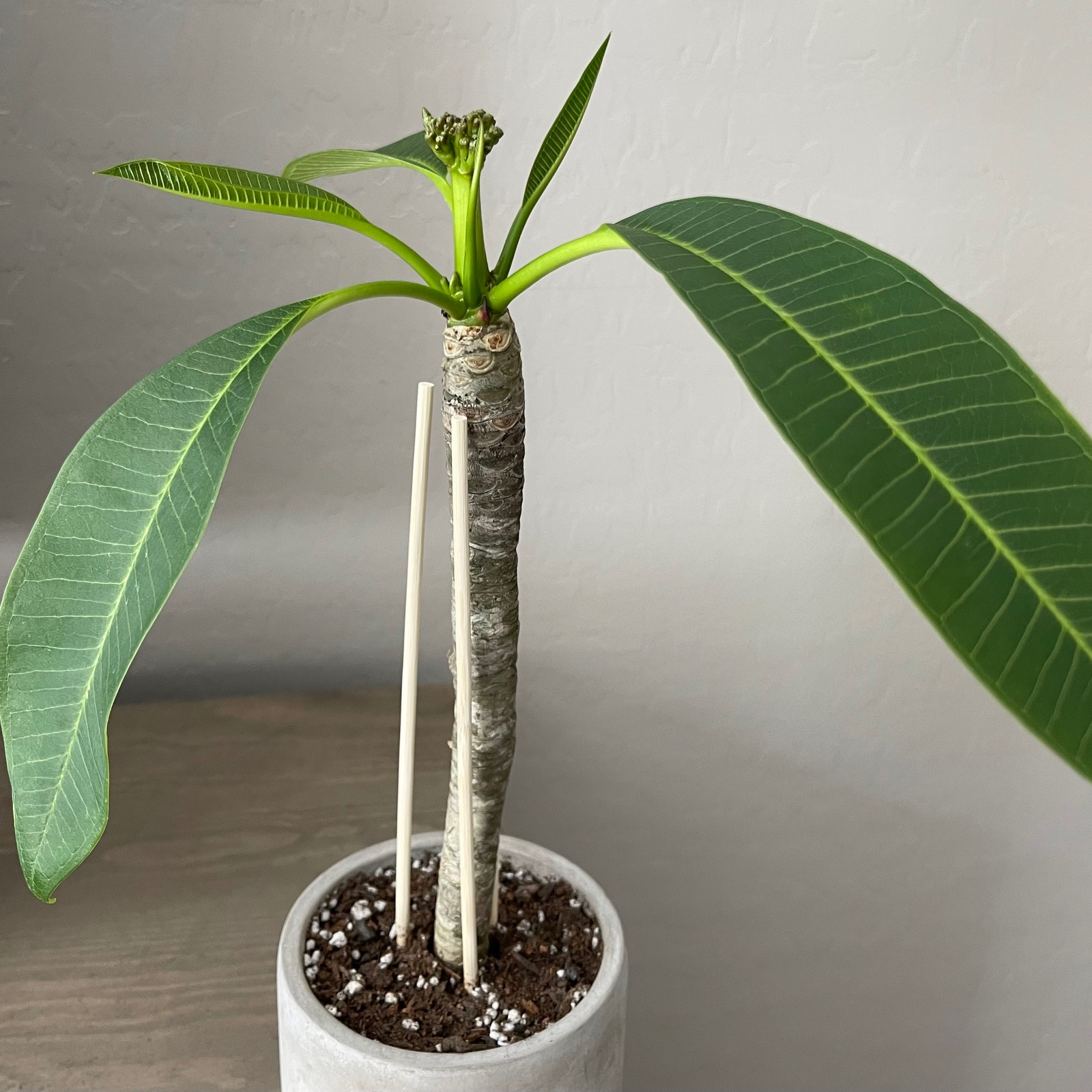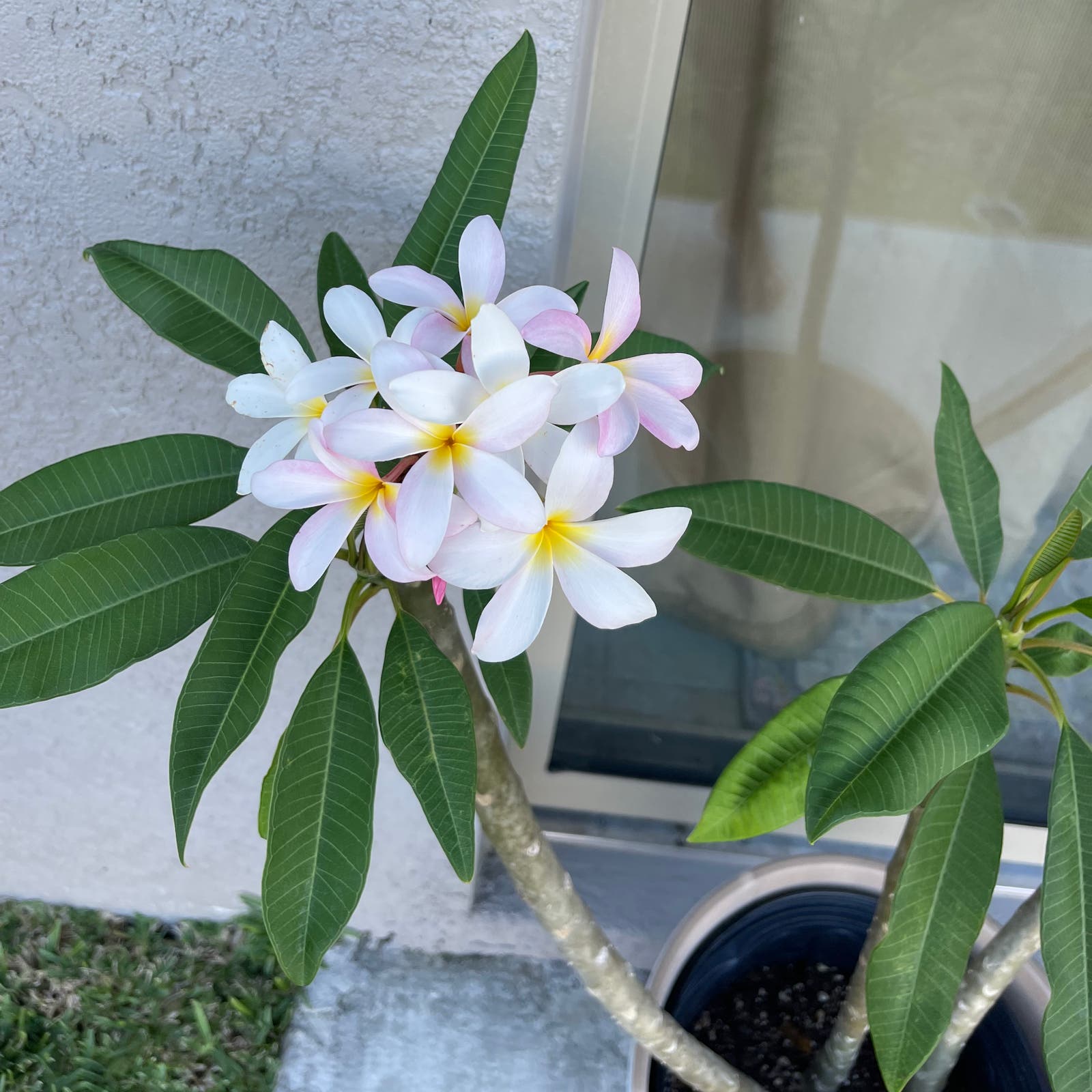Red Frangipani is Toxic to Cats 🐈
Dec 16, 2023•7 min read
Learn crucial tips to protect your cats from the hidden perils of Red Frangipani 🐾🌺.
- Red Frangipani is toxic to cats, causing vomiting, diarrhea, and lethargy.
- 🚨 Immediate vet care is essential after Red Frangipani exposure.
- Prevent exposure with cat-safe plants and no-go zones.
Toxicity Risks for Cats
Cats and Red Frangipani may not mix well. This ornamental beauty poses hidden dangers to our feline friends. Ingesting any part of the plant, particularly the bark, can lead to gastrointestinal upset. Symptoms like vomiting, diarrhea, and decreased appetite are telltale signs of trouble.
🌿 Ingestion Risks
When a cat chews on Red Frangipani, the toxins primarily found in the stem bark wreak havoc. Immediate pain may deter your cat from consuming large amounts, but even small amounts can cause significant distress.
🖐️ Contact Risks
It's not just about what they eat. Cats can also suffer from skin irritation upon contact with the sap. Watch for signs of discomfort, such as pawing at the face or excessive grooming.
🚨 Recognizing Symptoms
Symptoms of Red Frangipani toxicity in cats are hard to miss. Drooling, lethargy, and a sudden lack of appetite are red flags. If your cat's breath smells oddly fragrant, it could be a clue they've gotten into something they shouldn't have.
🚑 Urgent Response Needed
Don't wait for symptoms to escalate. If you suspect your cat has ingested or come into contact with Red Frangipani, act swiftly. The quicker you respond, the better your cat's chances of a full recovery.

Effects of Red Frangipani Toxicity on Cats
When a cat tangles with Red Frangipani, the aftermath isn't pretty. Symptoms can range from mild to severe, depending on how much of the plant your feline friend has decided to snack on. We're talking about a cocktail of gastrointestinal upset—vomiting, diarrhea, and a noticeable lack of appetite.
🚨 Recognizing the Signs
If your cat's mouth suddenly becomes a drool factory or they start acting like food is their worst enemy, it's time to suspect they've had a run-in with this plant. Mouth irritation is a telltale sign, especially if they're pawing at their face or making gagging sounds.
🖐️ Skin Contact Concerns
It's not just ingestion; skin contact with the sap can also turn your cat's day sour. Watch for redness or a rash, and if they're scratching like there's no tomorrow, it's a red flag.
😼 Unique Feline Reactions
Cats have their own brand of physiology that doesn't play well with certain plant toxins. Unique reactions can include tremors or changes in heart rate—scary stuff.
🚑 When to Seek Help
If your cat's showing any of these signs—persistent vomiting, diarrhea, or skin irritation—it's not the time for home remedies. Get them to a vet, stat. They might act tough, but when it comes to plants, curiosity can definitely hurt the cat.

Emergency Response for Cat Owners
When your cat has a run-in with Red Frangipani, swift action is crucial. Here's what to do:
🚨 Immediate Steps
- Inspect your cat's mouth for plant remnants.
- Rinse the mouth gently with water to remove any plant material.
- Offer a small drink of water or lactose-free milk to soothe irritation.
📞 When to Call the Vet
- Persistent vomiting or diarrhea? Vet time.
- Ingested a large amount of the plant? Call the vet, stat.
- Symptoms worsening or not improving? Get professional help.
🏥 At the Vet's Office
- Be ready to describe the exposure: how much was ingested and when.
- Your vet might recommend supportive care like IV fluids or medications.
- Monitor your cat closely after the visit for any new or persisting symptoms.
Remember, the Animal Poisons Helpline is your friend in times of need. Keep their number handy: ☎️1300 869 738 (AU) or ☎️0800 869 738 (NZ).

Veterinary Guidance and Treatment
When Red Frangipani poses a threat to your feline friend, immediate veterinary care is non-negotiable. If your cat has nibbled on this plant, don't play the waiting game.
🚨 Immediate Actions
- Remove the plant from your cat's reach, pronto.
- Call your vet or an emergency animal hospital – yesterday.
- Bring a sample of the plant to the vet for accurate identification and treatment.
🏥 Treatment Protocols
Veterinary intervention may include a physical exam and diagnostic tests to assess the extent of the toxicity. Treatments often involve:
- Inducing vomiting to expel the plant material, if the ingestion was recent.
- Activated charcoal to prevent further absorption of the toxins.
- IV fluids to combat dehydration and flush out toxins.
- Medications to alleviate symptoms like vomiting, pain, or inflammation.
🛌 Post-Treatment Care
After the vet visit, your cat might need a bland diet or extra TLC as they recover. Keep a close eye on them and ensure they steer clear of Red Frangipani in the future.
Remember, there's no antidote for this toxicity – supportive care is key. The quicker you act, the better your cat's chances of a full recovery.
Preventive Measures for Cat Owners
🐱 Indoor Safety Measures
Elevation is key. Keep Red Frangipani on high shelves or in rooms with restricted feline access. Cats are climbers, but they're not always mountaineers.
Distraction works wonders. Offer cat-safe plants like Spider Plants or Boston Ferns. They're like decoys that say, "Chew on me instead!"
Deterrents can be a game-changer. Citrus peels in the soil or pet-safe repellents may just save your plant—and your cat.
Visibility is crucial. Regularly inspect plants for signs of cat nibbles. It's like a game of I Spy, but with higher stakes.
🐾 Outdoor Safety Measures
Create a no-go zone. Use natural barriers like thorny branches or shells. It's like setting up a little obstacle course they'd rather avoid.
High-tech helps. Motion-activated sprinklers or ultrasonic deterrents startle cats away. It's like having a bouncer for your garden.
Plant placement matters. Keep Red Frangipani out of paw's reach. Think of it as playing keep-away with your greenery.
Engage their curiosity elsewhere. More playtime means less interest in toxic plants. It's like distracting a toddler with a shiny new toy.
Safe Alternatives and Substitutions
😺 Cat-Friendly Plant Alternatives
For cat owners seeking to replace the Red Frangipani with safer greenery, a plethora of non-toxic options exist. Consider these feline-friendly plants:
- Spider Plant: A champion of air purification, it's a hit with cats and humans alike.
- Boston Fern: Lush and verdant, it adds a touch of wilderness without the worry.
- Areca Palm: Tall and tropical, it's a statement piece that's completely cat-safe.
- African Violet: Offers a color pop that's pleasing to the eye and harmless to the whisker.
- Parlor Palm: Compact and charming, it purifies your air and keeps your cat content.
- Catnip: Beyond being safe, it's a feline's recreational favorite.
- Cat Grass: A grassy snack that aids in digestion and satisfies the chew urge.
Aesthetic Appeal and Safety
When it comes to home decor, these plants don't just play it safe; they turn heads.
- Fittonia: Its intricate leaf patterns are a visual feast and perfectly pet-friendly.
- Watermelon Peperomia: With striking foliage, it's as delightful to cats as it is to humans.
- Bromeliads: Their vibrant spikes bring drama to any space, sans the peril.
- Baby's Tears: A delicate carpet of green that's soft on the eyes and safe for paws.
By choosing these alternatives, you're not just creating a safe haven for your cat; you're curating an indoor jungle that's both stunning and serene.
Raising Awareness
🐱 Educating Others
Awareness is key in preventing Red Frangipani toxicity in cats. Start by informing your local community through social media posts or flyers at vet clinics and pet stores. Highlight the risks and encourage discussions at community events. Remember, knowledge is power—and in this case, it could save a feline life.
📢 Sharing Information
Urge fellow cat owners to spread the word about the dangers of Red Frangipani. Share articles, infographics, or even personal stories on platforms like Facebook or Instagram. Use hashtags like #CatSafety and #ToxicPlants to increase visibility. Let's make the internet a tool for feline welfare.
